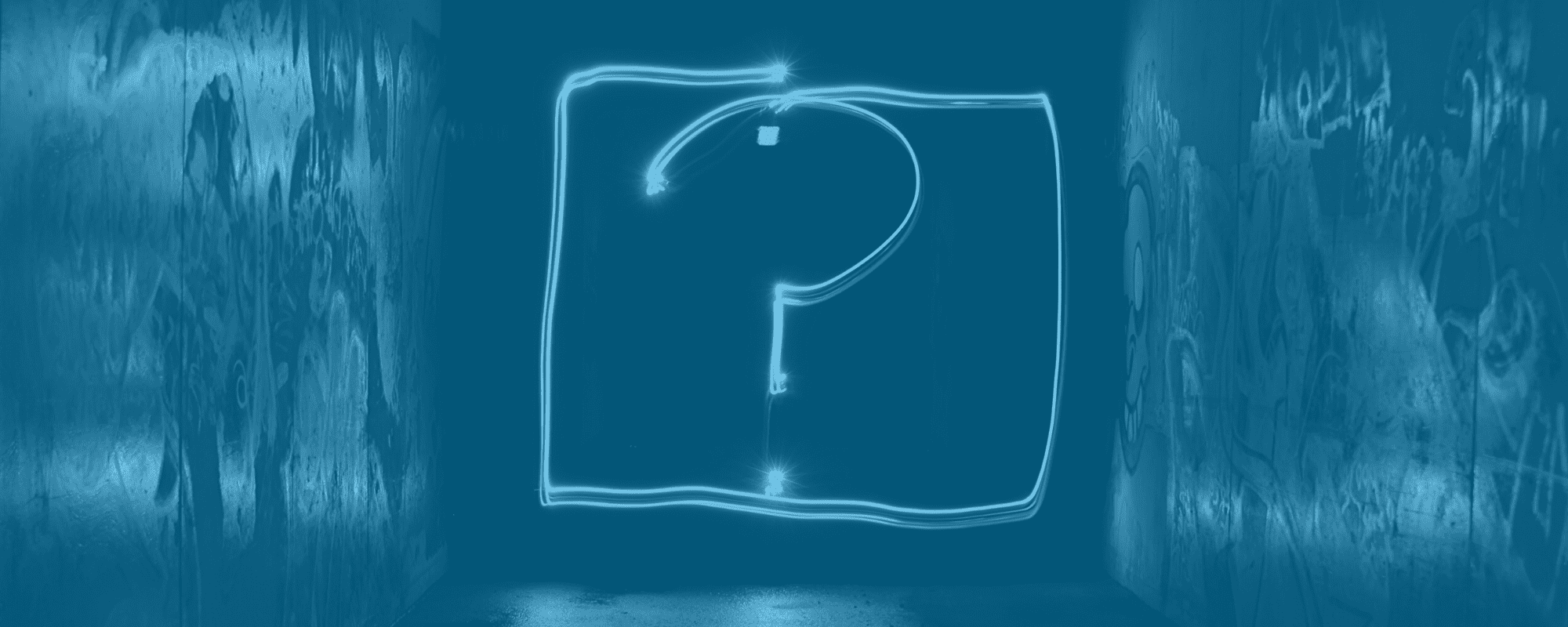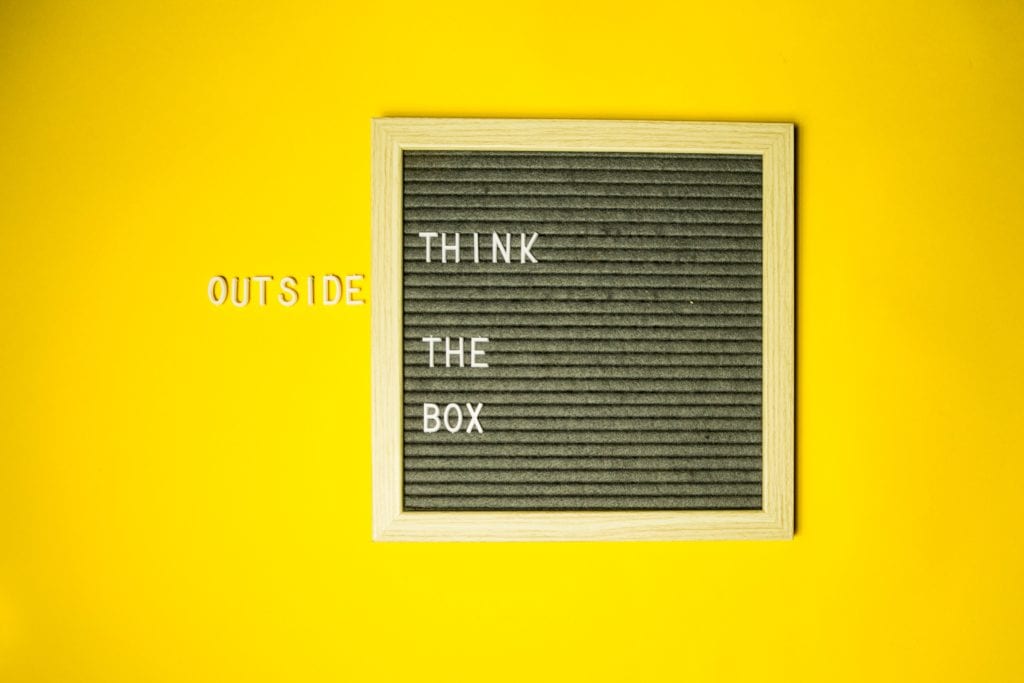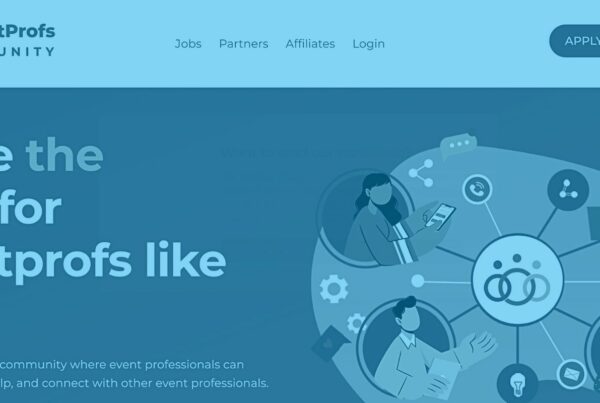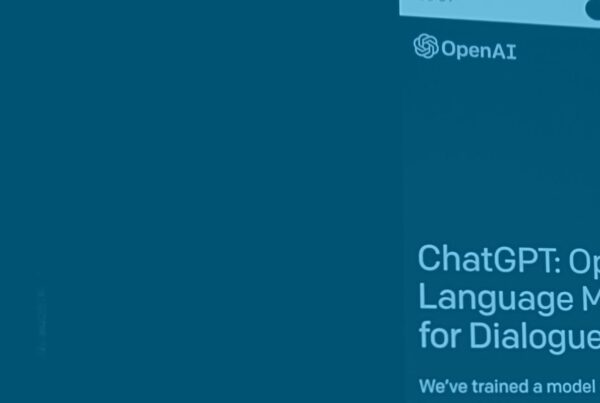It’s safe to assume you’ve been thinking a lot about virtual event possibilities. Because let’s be fair, virtual events will be the norm for a while. And surprisingly enough, not many event profs have experience with this format. So it’s only natural that dozens of questions pop-up into your head. Where do I even begin? What are the limits? How much of the in-person experience can be faithfully translated into this virtual format? These are only a few of the doubts we know event planners have.
But here at Endless, we love nothing better than to educate. And because the industry is witnessing such an enormous shift, we want to help where we can. So on this week’s episode of the Event Tech Podcast, we’re giving you some answers. Our incredible host Will Curran sat down with Andrew Latimer to tell you all about virtual event possibilities. So if you’re curious to learn exactly what can be achieved with virtual events, then wait no longer and press play now!
Click here for the full audio transcription.
Virtual Event Possibilities: The Simplest Versions
You may not realize this, but you’ve probably attended a couple of virtual events yourself. “A lot of people experience virtual events on a daily basis in their office and corporate meetings already”, says Andrew. “So you can join a webinar through Zoom or Skype or WebEx. So I think at the most rudimentary level that would qualify as a virtual event. When you know the C-suite of a company getting together in the conference room and the rest of the company joins from their desks, it’s still an event”.
Considering The Limitations
“The platform that you’re viewing in is built for web conferencing. So you’re going to see people’s screens popping in and out”, adds Andrew. “There’s not a lot of control to it. You could have a couple of people that are just not paying attention and you see them in the background wandering off. It’s not going to be professional, to me that’s just like wandering into a board room. To me, a virtual event really does start once we go one step above that”.
Traditional Live Streams
“That would be the more traditional live streams that you see them on YouTube or Facebook or Twitch”, he adds.” Now, we’re just looking at a broader marketplace of what companies, bands, galas, birthday parties, weddings can utilize those platforms. Again, looking at the most basic level there, you have these out of the box players. Whether they are on social media or a tool like Vimeo’s Live stream, where anyone with a laptop can put their webcam on. Some have basic reactions built into them – likes, thumbs up. Live stream offers rudimentary levels of analytics, password protection on their first step of the paid plan. So you can get a little bit of feature to it. But at the end of the day, your basic virtual event is more or less a live stream that we’ve seen before”.
“Where you can really get a lot of power out of that, but still keeping it as an affordable option is investing a little more in preproduction of your content. Getting some graphics together, getting an AV provider. And right now there’s a lot of those out there that are eager to assist with your event. So, you can fairly quickly and easily deploy a single camera in your office and stay six feet apart from everyone. And be able to bring in some graphics on the screen, a lower third like you see on the news, flash the PowerPoint up, play a video, all of that can be done in-office or even remotely and then sent to the live stream with without really breaking the bank”, Andrew explains.
Budgeting Virtual Events
Obviously, the more complex you want your event to be, the bigger the budget has to be. “So when we start looking at the Zooms and Skypes, a lot of that can be done within the resources your company may already have. If you’re looking at it from the perspective of a band, you might be wanting to go on to Twitch or Facebook Live. Someone might already have some basic camera equipment and your band, you can kind of multipurpose that and jerry-rig something together. If you’re looking for a little bit more professionalism there, you’re probably going to want to rent a camera, rent out a studio, some basic audio mixing equipment, and microphones and so forth”, says Andrew. “Then you start talking about a couple of thousand dollars there”.
“I think looking at your general live stream, single-channel we’re just going to talk in front of this open platform for two hours or four hours, and a couple of hundred people are going to watch it. We’re going to keep it pretty simple. You’re talking in the low thousands, you could see it go up to 10,000, 15,000 once you start having that onsite studio, where you have some professional technicians running your graphics in and out. Again, still not getting anywhere near what you might’ve spent in a traditional marketplace of a two-screen set up in a ballroom for a day or two days. That’s usually going to be more than that at that point. So it’s still providing you with some savings and on the plus side, I think it gives a broader market”.
“1,000 people can watch a live stream, 100,000 people can watch a live stream. The only difference is you’re paying for some extra bandwidth. There’s really not a fixed cost. That’s not a worry anymore. You’re talking, maybe you have to pay an extra a hundred bucks for the extra bandwidth of those folks”.
Production Goes Up, Costs Go Up
“Now obviously, once you start getting into some of the more advanced technologies, those numbers can go up. So, I think you would still be considering if you’re having an expo hall, one-on-one in-person networking sessions and general sessions, multiple breakouts and everything going concurrently and all of that being wrapped into a beautiful platform. Rather than having a massage room, you have yoga instructors doing morning sessions. You’re still looking at most of the same elements that you would have had in your in-person event. The only real difference being that your venue rental costs are going to shift to internet and networking rental costs and your meal budget is probably going away”.
Virtual Event Possibilities: Popular Choices
When it comes to the most popular virtual event possibilities, “we’re seeing a lot of live streams but packaged up with some fancy tools that make it feel more like a broadcast. More like something you’re used to interacting with online already. So what that would entail is you might have a couple of different presenters coming in either remotely or all going to a single studio site and then broadcasting out from there. You can actually do a mix of those. If you want to think about all of this, almost like a newscaster, the daily show or any of those late nights, there’s a lot of options within that to conceptualize your key experience at your event”, Andrew explains.
The Cool Add-Ons To Make Your Virtual Event Pop
“So, we still have the live stream element of that. But we can add in all the graphic enrichment we already talked about. But then also bring in question and answer platforms. Chat boxes in rudimentary forms. You can do some basic registration as far as using Google single sign-on and capturing a bit of data from that. Most of these streaming platforms out there will give you some level of analytics. So you’ll be able to see how many people viewed it, where their IP addresses were from. It gives you a little bit more of a package there. The question and answer formats can really be engaging. There’s a variety of tools out there. One that I like is called a Slido that lets you have a question-answer”.
“There’s a beta for an ideas board right now. There are some polling options for it and it lets the crowd contribute as the event goes along. They can even view the live stream inside of that. You can put the presenter slides there for future reference. It gives a lot of power in that package. Then, you can start looking at your breakout rooms as maybe that’s a place that you want to use these Zoom or Skype tools. But still, host from inside a webpage that has all of this information on it. So, where your conference page may be right now. You might be looking at something more like an agenda, your speaker bios. But then under that, you have a general session tab and then a breakout rooms tab”.
“At the end of the day, you can’t replace the one-on-one interaction with just a live stream. That’s where something like a Brain Dates or Zoom Rooms around certain topics at certain times can be really impactful. Again, as that all scales up, we start seeing more and more cost”, Andrew adds.
One Stream & Multiple Stream Costs
“One stream is great. Multiple streams, I guess you can think of like channels on your television. Each of those is going to have similar hardware costs. So you’re not necessarily doubling if you add a second stream. But you are going to see additional costs related to that. It’s probably fair to say that if your conference was previously a general session for three days and 10 breakout rooms and you had an expo hall, you’re probably going to end up spending as much on AV”.
“Plus also the networking costs you might’ve been paying for attendee internet. A lot of that budget I think is still going to translate. So it is important to keep that in mind. If this once was a revenue-generating event for you, you might have to be more strategic with what you’re doing. We see some people doing single day TED Talks, cut some of the presenters that might not have been fantastic but had good info”.
“You can relay that information to someone who is a skilled presenter. Or really dial it back into, all right we’re going to go to this person who has some interesting updates about this latest software that we’re deploying. They can spend five minutes on it rather than 45 minutes plus a 15-minute question and answer in a breakout room that 20 people are sitting in. Now, your whole organization can see that five-minute update and really get the high points of it. There’s probably a little more strategy that has to go into your session selection”.
Virtual Event Possibilities: Asynchronous Options
So far, we’ve covered virtual event possibilities directed towards very synchronous events. But as Will puts it, what options are out there for people who were planning a three-day-long event? “This gives a whole opportunity to not only bring in the larger audience that we were talking about but also most of these platforms, it may be included or maybe an added cost, they will record and potentially even give you a DVR ability. Like TiVo used to be a couple of years back. You can do that. But it’s also all going to be recorded on-demand from really most, if not all, of these platforms”, says Andrew.
“If someone’s not giving you that, I would challenge the use of that platform at that point, to be honest. That will let you have really anyone come back at any point to review it. If you had 60 breakouts before you could still do that and give everyone the option to attend all of them. You don’t have to really be super considerate in your timing of them. And obviously as long as it’s not the same person presenting two at the same time. You could have a 9:00 and a 10:00 that once had to be separate. They could go back to back now because someone can come back and view it later. I think where that starts to encounter some challenges would be in your moderation and question-answer of it. Obviously live a presenter can respond to questions instantly at that moment”.
A Creative Solution
“But I think an interesting solution that we’ve seen already is that you can keep the question and answer page live. And communicate times where the presenter will come back and answer the questions in that platform. Potentially do an additional stream, or you can get a summary of maybe you had the West region was doing breakouts for a day over here”.
“Well, you can kind of pull all of their questions together and say, “All right, we did all of that on Wednesday. On Friday, let’s all come together for one hour and we’re going to do a question and answer session with the six breakout presenters all on one panel.” That’s a pretty easy technology solution from the delivery side. It’s just wrapped in the same broadcast wrapper where you have question and answer, and a viewing platform on a page. People can come back and get all those questions answered that might have come up during the rest of the conference”.
Where Will This Take Us?
The current shift in paradigm has the potential to change the industry forever. After this, virtual events might very well become a staple! And we’re very excited about the virtual event possibilities that might come out of this. “I’m very interested to see where this goes as far as the scale of how the content is presented”, says Andrew. “Because we have seen TED Talks before, but I think there’s going to be a lot of interesting synergies”.
“E-sports has been getting bigger and bigger. That kind of mentality and gamification is going to start translating into virtual events. I think you’re going to see a lot of gaming elements brought into these virtual conferences. I think we’re also going to see a very heavy concentration of fitness programs, employee wellness, that it may not even be a virtual event”.
“That whole realm is just beginning to be opened, as far as how you’re going to participate in this from home. I expect once people see how easy it is to do this, that it’s going to be more frequent. You used to come together for a quarterly regional meeting that everyone had to travel for. Let’s be honest, a lot of people didn’t really want to do it, because you’re sitting in a ballroom and an off city hotel, but it was inconvenient to get to”.
Virtual Event Possibilities On The Creative Side
“It’s going to be interesting to watch people that are in the digital ad space, start to learn how to monetize this as well. Because where a conference vendor might’ve once said the 15-minute speaker slot on stage, I think there are some mixed reactions to that. And the mixed impact of it, depending on how engaging the sponsor is. The marketing team of these companies could put together a 30-second ad spot. Or a two-minute ad spot. You can now have your sponsors advertising in your conference videos. Because I think a lot of people are going to want to take breaks after 15 minutes, after 30 minutes. We’re all conditioned to that from television and not subscribed to top end Netflix or Hulu streams”.
“We get those ads there too. It’s almost conditioned and expected. That’s a great revenue opportunity to still keep key sponsors. We can put you on the webpage of course. But we can also give you ad rolls in the middle of our content. And just send a little chat from your software”.
Conclusions
And that’s a wrap on this week’s edition of Event Tech Podcast! Are you excited about all the virtual event possibilities? We know this is a very new territory for many event profs out there. But hopefully, Will and Andrew have shown you that there are plenty of virtual event possibilities that allow you to make this happen. So give it a try, and don’t forget to join us next week for some more tech talk!












